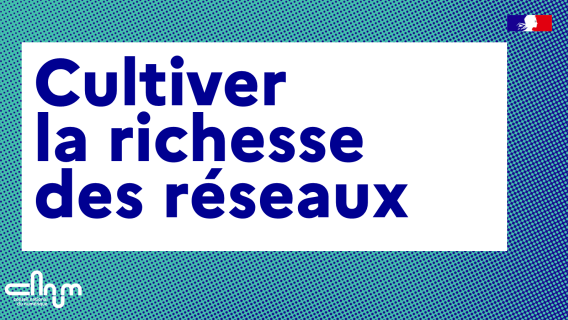Understanding attention to enable collective action: 4 questions to Marion Thain.
As Director of the Centre for Attention Studies’ at King’s College London and author of Distracted Reading: Acts of Attention in the Age of the Internet (2018), we asked Marion Thain how we can better understand and manage individual attention in the digital era and how to build collective attention.
What is the impact of technology on the problem of attention?
First, we have to stress that we are not talking about digital technologies only, but about technology in a broad sense. Technologies have been blamed for creating unprecedented distractions since at least the Industrial Revolution. We worry about attention spans contracting due to the ubiquity of micro-blogging, but in the early twentieth-century the writer Ezra Pound was already attributing the shift in readership from poetry to the novel to the distractions of the modern world. He thought readers no longer had the concentration required for poetry. You can trace similar complaints back to much earlier times too: the new technologies of each age are blamed for distracting us. It’s important not to think this is a new problem. If we recognize the longevity of this complaint, then we can also learn how previous ages coped with it. For example, it’s easy to think of the past as much like the present but without digital technologies. Yet in late-nineteenth-century London there were up to 12 postal deliveries a day per person, so letters were often being exchanged with the same frequency as emails.
There are some crucial differences, though. If you look back, for example, to the time before changes in the law stopped Paris from being completely covered in advertising billboards, you see that our attention was just as commodified a century ago. But what has changed is the ability to track our engagement with that advertising. One thing that is new with digital technologies is the growing ability to monitor where individual attention is being directed. Today, a key ambition for the attention economy is to be able to gather data on how we spend our attention in order to design more effective advertising.
One thing that is new with digital technologies is the growing ability to monitor where individual attention is being directed.
In this context it is easy to see a digital dystopia, and it’s easy to overlook the potentially productive aspects of distraction. Some of the contributors to the ‘Distracted Reading’ project wrote about the role of distraction in creativity and in enabling new connections to be formed within our brains. We need to look more at distraction and cognitive agility. In particular, is it true that sustained, unified attention is always the most productive mode? It seems to me essential that we empower people to be more self-aware and to harness the potential of attention and distraction for their own objectives and well-being.
How can we manage attention not only at an individual level, but at a global level?
At an individual level, there might be a holistic design for the body and the mind, of what works for us mentally and physically. We hear a lot at the moment about exercise ‘snacking’: the benefits to the body of frequent short bursts of different types of exercise rather than sustained and intense workouts. If that is very healthy for our bodies, what about our minds? Perhaps we should pay more attention to the potential benefits of distraction. How far can our minds really sustain acts of ‘unified attention’, and how far is this a realistic or even beneficial ideal? Might we think about harnessing the power of distraction to keep the body and the mind alive and moving.
An important issue at a global level is biases of attention. Biases are often linked to habits of attention. The 19th century psychologist William James wrote about how we would never make it through a day if we had to make a conscious choice about what to attend to in every moment. We rely, he argued, on habits of attention to enable us to navigate through the stimuli and stop us being overwhelmed. But what about the implicit bias encoded in these necessary habits of attention? How can we become more aware of our attention habits and the biases they may bring to our experience?
How interdisciplinarity can help us better understand attention?
Every different discipline has something different to bring to our understanding of attention: attention needs to be understood in terms of psychology and biology, but it is also a phenomenon that exists within a social, cultural and economic context. At the Centre for Attention Studies at King’s College London, we have an interdisciplinary approach to the concept of attention. We are trying to achieve a new form of “radical interdisciplinarity” which brings together psychologists, sociologists, computer scientists, and experts on culture, art and business studies. We think that the concept of attention can only be understood by combining all of these disciplinary perspectives.
There is a lot of work on distraction and the digital world, and much of it is pretty pessimistic. A piece by the scholar James Williams from 2017, for example, argues that digital distraction is undermining the very basis of democracy (Stand Out of Our Light). Our approach at the Centre is a bit different: while not ignoring the challenges, we try to think about how we can harness the possibilities of this new digital environment for the benefit of the individual citizen, because it’s not going to go away.
Of course there are challenges but there are also huge opportunities: how can we live better with distraction? In this regard, education can help us to be aware of our different attentional modes, and help us be more in control of our choices. A greater understanding of attention will enable us to be more empowered in the world.
A greater understanding of attention will enable us to be more empowered in the world.
How can digital technologies play a role in supporting an attention that is no longer individual but collective?
I am starting a new project with the Centre for Attention on collective attention: how can we think about attention as an act of socially distributed cognition? How can digital technology help us develop collective ways of thinking? Whether addressing economic, health or environmental issues, enabling collective attention is a necessary step toward collective action. Many of the challenges of the digital age are underpinned by issues of attention; we need to better understand attention in order to develop the tools to address those challenges. Urban design must be taken into account here, because this will have an impact on how we attend and what we attend to. The design of our environment plays a role in determining what we attend to. I’m particularly interested in the connections between how we move through space physically and cognitively.





